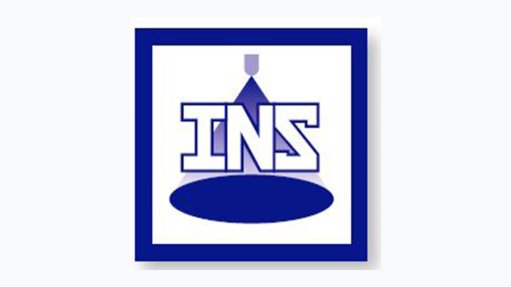Customs commercial fraud
On November 24, the World Customs Organisation (WCO) published its first ‘Global Trendspotter Report on Customs-Related Commercial Fraud’, which was compiled by customs experts and WCO Regional Intelligence Liaison Offices (RILOs) and European Anti-Fraud Office (OLAF) representatives with financial support from Korea Customs.
The best description of commercial fraud I could find is provided by law firm Richardson Lissack, which states: “Commercial fraud is a title applied to numerous actions against or involving a company or business. The crime itself can take place through failing to prevent the facilitation of tax evasion, false accounting with a view to misleading shareholders and in many other circumstances.”
As for customs fraud, Whistleblower Law Collaborative (WLC) defines it thus: “Customs fraud is any fraudulent attempt to reduce the customs duty (or tariff or tax) imposed on goods when they are imported into a country from abroad.” WLC identifies four common types of customs fraud: transshipment, undervaluation, misclassification and structuring. Transshipment is when an importer sends goods from the country of origin to, or through, an intermediate country before it arrives in the country of importation. Undervaluation is when an importer declares a very low value for the imported goods for customs duty purposes, resulting in illegally reduced import duty (the collective of all duties, levies, and taxes) on the imported goods. Misclassification is when an importer falsely describes imported goods and uses the incorrect commodity code, also known as the Harmonised System code, to attract a lower or free rate of duty. Structuring is when an importer breaks a shipment up into multiple shipments of lower values.
Generally, customs laws include provision for a de minimus exception, which provides for imports below a specified value not to be subject to customs duties. Thus, by breaking up shipments into multiple parts, an importer can fraudulently claim that the shipments fall below the threshold.
Returning to the WCO report – it offers insight into new trends and fraud patterns, complementing traditional monitoring instruments. It is built on methodological triangulation, involving a range of qualitative and quantitative methodologies comprising scientific literature reviews, data collection and the compilation of expert opinions in a structured manner, based on the Trendspotter methodology originally developed by the European Monitoring Centre for Drugs and Drug Addiction as a tool for drug monitoring.
It provides a classification of the three most significant types of commercial fraud, based on WCO member administrations’ experiences. The types are not specified. According to the WCO, this ranking may help customs authorities prioritise their efforts. Additionally, it identifies several activities that pose the greatest threat when it comes to commercial fraud. An important contribution is the capturing of elements that affect how fraudsters operate, along with the identification of indicators pointing to suspicious activities. The report also lists the best means of detection, highlights a range of good practices developed worldwide to fight fraud and makes recommendations. Unfortunately, access to the report is restricted to representatives of customs and relevant law-enforcement agencies.
The report was launched at an event attended by 200 delegates from 60 customs administrations, together with WCO RILOs and OLAF representatives. The WCO secretary-general called on participants to “act quickly by spotting new trends based on a blend of customs enforcement network data, seizure data reported by customs administrations and expert assessments”. OLAF welcomed the report, stating: “It is clear that the identification of typical customs fraud, in particular undervaluation and fraud in relation to e-commerce, is in line with OLAF’s findings. We welcome the recommendation to set up a Commercial Fraud Observatory and we are ready to share our expertise with the WCO. This initiative will enable the WCO to map the nature and size of new trends and will be beneficial to all actors fighting customs fraud.”
Article Enquiry
Email Article
Save Article
Feedback
To advertise email advertising@creamermedia.co.za or click here
Comments
Press Office
Announcements
What's On
Subscribe to improve your user experience...
Option 1 (equivalent of R125 a month):
Receive a weekly copy of Creamer Media's Engineering News & Mining Weekly magazine
(print copy for those in South Africa and e-magazine for those outside of South Africa)
Receive daily email newsletters
Access to full search results
Access archive of magazine back copies
Access to Projects in Progress
Access to ONE Research Report of your choice in PDF format
Option 2 (equivalent of R375 a month):
All benefits from Option 1
PLUS
Access to Creamer Media's Research Channel Africa for ALL Research Reports, in PDF format, on various industrial and mining sectors
including Electricity; Water; Energy Transition; Hydrogen; Roads, Rail and Ports; Coal; Gold; Platinum; Battery Metals; etc.
Already a subscriber?
Forgotten your password?
Receive weekly copy of Creamer Media's Engineering News & Mining Weekly magazine (print copy for those in South Africa and e-magazine for those outside of South Africa)
➕
Recieve daily email newsletters
➕
Access to full search results
➕
Access archive of magazine back copies
➕
Access to Projects in Progress
➕
Access to ONE Research Report of your choice in PDF format
RESEARCH CHANNEL AFRICA
R4500 (equivalent of R375 a month)
SUBSCRIBEAll benefits from Option 1
➕
Access to Creamer Media's Research Channel Africa for ALL Research Reports on various industrial and mining sectors, in PDF format, including on:
Electricity
➕
Water
➕
Energy Transition
➕
Hydrogen
➕
Roads, Rail and Ports
➕
Coal
➕
Gold
➕
Platinum
➕
Battery Metals
➕
etc.
Receive all benefits from Option 1 or Option 2 delivered to numerous people at your company
➕
Multiple User names and Passwords for simultaneous log-ins
➕
Intranet integration access to all in your organisation














